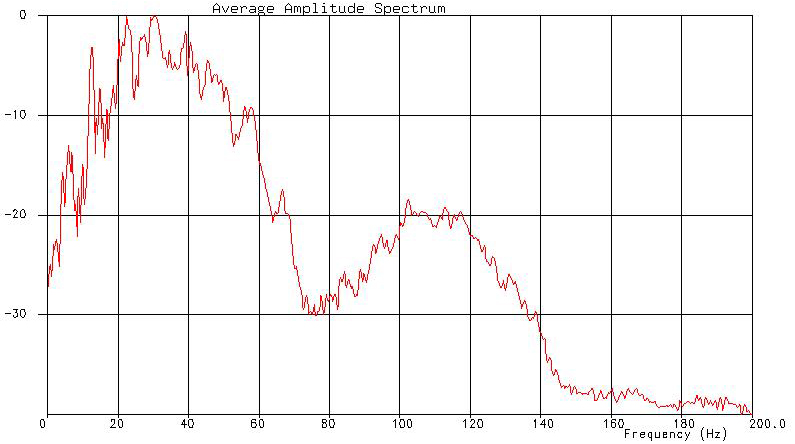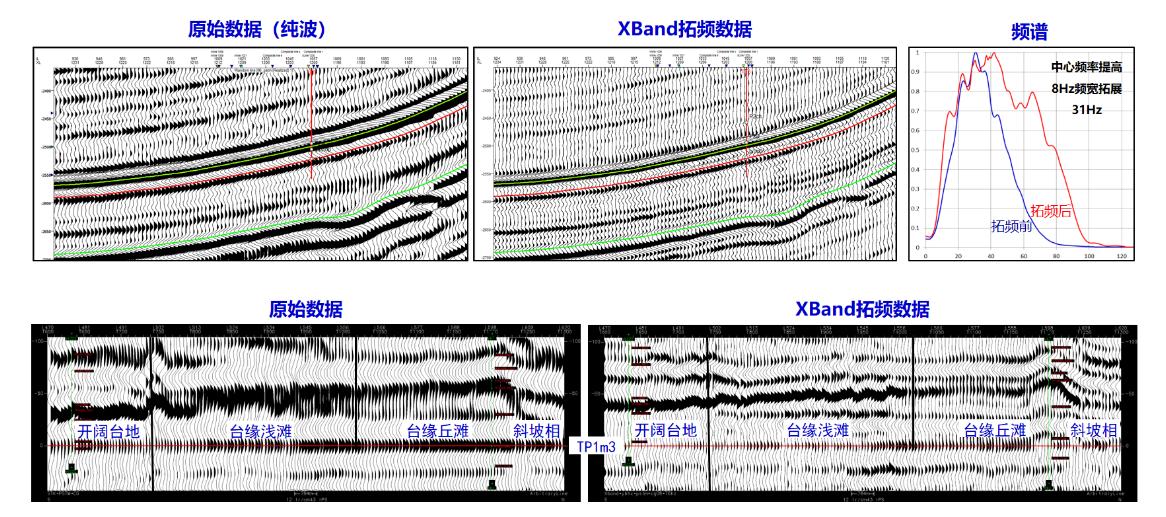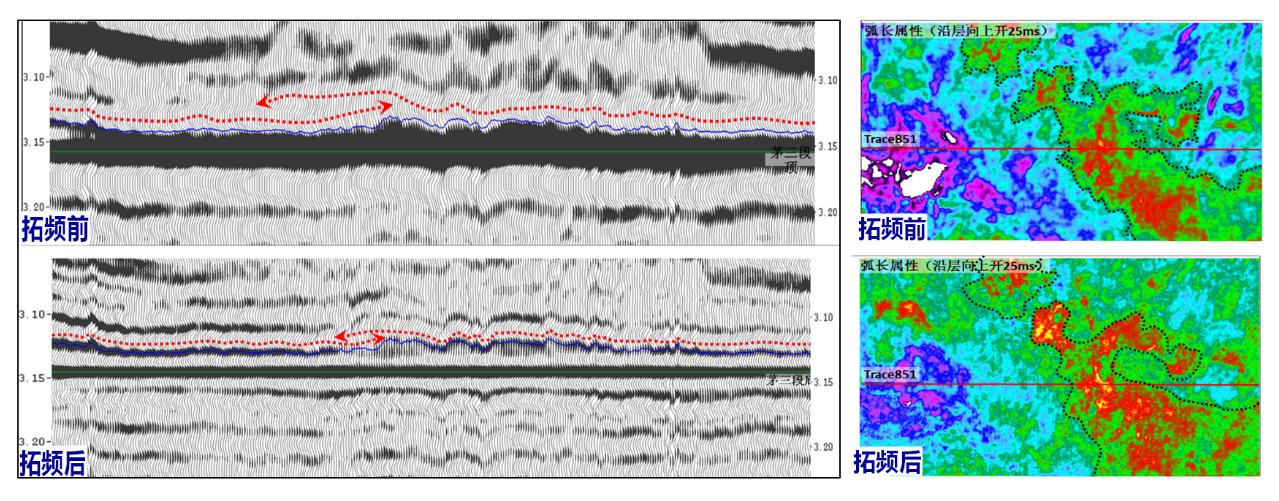

Because source and cable are located below sea surface, the reflection generated by sea surface will closely follow the reflection of underground interface, and wave field mixing will cause serious frequency notch, resulting in narrowing of the frequency bandwidth of underground reflection signal. The geophone will simultaneously receive ghost waves generated by the source direction and cable direction. The situation is complex, and it is difficult to accurately predict ghost waves, which are affected by many uncertain factors:
Ø Uncertainty of reflection coefficient
Ø The shape of wavelet is affected by ghost time difference and reflection coefficient at the same time
Ø Cable depth measurement accuracy
Ø The ghost wave time difference is related to incident angle
Ø Cable ghost wave is spatially and timely variable in same shot record
Ø It is difficult to estimate the impact of absorption and attenuation
We have developed a data-driven adaptive ghost suppression method, and adopted the following strategies for ghost estimation and application:
Ø Data driven estimation ghost wave operator, including reflection coefficient and time difference
Ø The ghost wave operator is very sensitive to the changes of the streamer depth and the height of the sea wave. Through iterative optimization, finding best parameters
Ø Calculation and application of ghost wave operator in Tau_P domain
| |
 |  |
鬼波压制前叠加剖面及频谱 | 鬼波压制后叠加剖面及频谱 |


Widen the bandwidth of seismic signal and improve the resolution of seismic data based on compression sensing and high-dimensional wavelet transform theory.
■ Maintain the original S/N ratio of seismic data
■ Keep the relative amplitude relationship and time-frequency characteristics of seismic data
■ Compensate the low-frequency component of seismic data
BFE technology provides petroleum exploration with high S/N ratio, high-resolution seismic data. On this basis, high-precision lithology and petrophysical property inversion can obtain more detailed and rich reservoir geological information, thus reducing exploration risks and improving the efficiency of oil and gas exploration and development.
The upper part of the figure below shows the comparison before and after BFE frequency extension. After BFE, the effective bandwidth has been expanded, and the characteristics of wave group have been maintained, which is more conducive to geological interpretation.
The lower part of the figure below is an example of carbonate rocks in southern China: the seismic data after frequency extension is more abundant, and the phenomenon of onlap, foreset and mound beach shape are clearer, which is conducive to the description of sedimentary microfacies.

The following figure shows the comparison of attributes map before and after frequency extension. The resolution of seismic data is significantly improved after BFE, and the karst distribution range on attribute map is more accurate.
